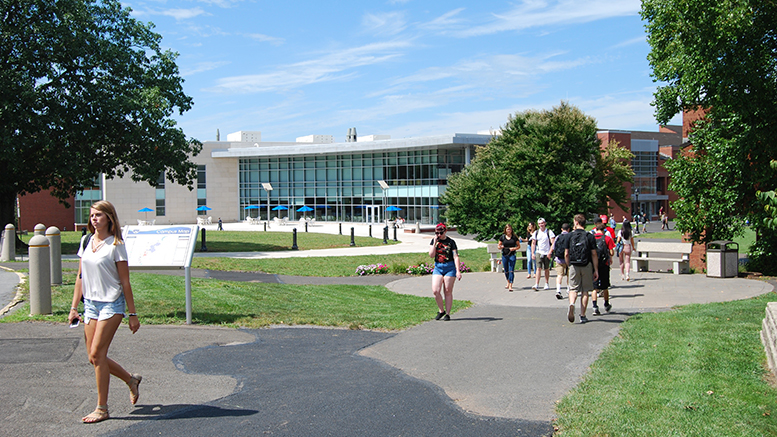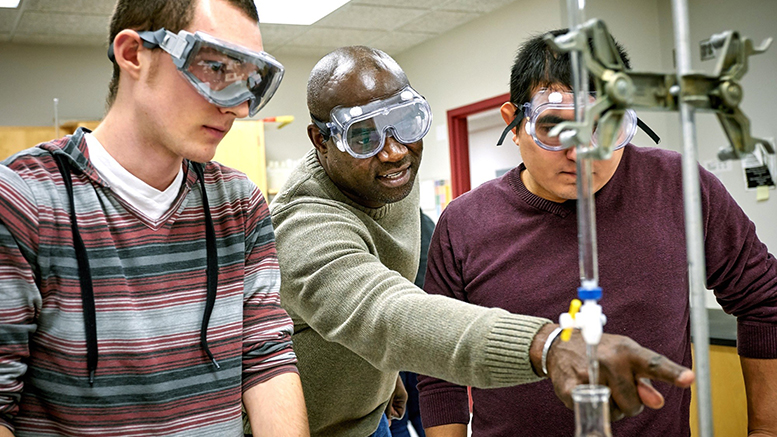Whether it’s because of the lower tuition, the ability to gain credits while living at home, a particular course they want to take, or a preferable option to a summer job, an increasing number of four-year college and university students have been enrolling at community colleges during the summer to take a course — or two or three.
While some schools have joined statewide consortia to undertake these marketing efforts, others have forged their own individual paths to attract university students in their respective areas who are home for the summer.
The number of “guest students” at Grand Rapids Community College (GRCC) in Michigan increased nearly 80 percent between the advent of its summer marketing push in 2011 and last year. In 2018, 1,374 students from other colleges and universities took GRCC summer courses, nearly a quarter (22 percent) of all students enrolled.
Editor’s note: This article is the second of a two-part series on how some community colleges are using their summer programs to attract university students home for the summer.
The highest number (475) came from Grand Valley State University, followed by Michigan State University, Calvin College, Central Michigan University, Western Michigan University, Ferris State University and University of Michigan. They enjoyed the in-district tuition rate of $115 per hour, which Eric Mullen, associate dean for enrollment, says is typically 30 percent to 40 percent lower than the state schools.
This summer, GRCC is offering 320 courses to guest students, which Mullen says are a mixture of online, on-the-ground and hybrid courses, offered during two seven-week terms.
“It’s been a fairly smooth process for us. We love being able to provide our community with additional resources,” he says. “It’s been a win-win to see some additional enrollment for us, and see students, while they’re home, capitalizing on getting some additional credits.”
Approach them in the winter
GRCC launched the effort in 2011 when the recession eased and enrollment began dropping. It started with the insight that students would be home over the winter holiday break and probably would not have finalized their summer plans yet. Meanwhile, the college had been sending out postcards designed to arrive at students’ homes on January 2 with the message, “What are you going to be doing this summer?”
“Parents were like, ‘You’re not going to be sitting around here,’ ” Mullen says. “That postcard generated a lot of response. It was like an open letter to parents. Trying to reach them in the spring, a lot of times plans were made. It’s not rocket science, but it worked pretty well.”
GRCC has complemented those postcards with advertisements in university newspapers and after a few years with social media targeting. The school purchases names from the College Board and determines who on the list is attending a college and university “other than us,” Mullen says. “That’s who we target.”
Students haven’t had difficulties with articulation — even though Michigan does not have common course numbering and already-in-place articulation agreements — because GRCC has worked upfront with officials at students’ universities to gain a sign-off that courses will transfer back, he adds.
Summer steady
Bucks County Community College in Newtown, Pennsylvania, in the northern suburbs of Philadelphia, has marketed summer courses to “guest students” at four-year colleges and universities for as long as Provost Lisa Angelo has been on campus. As a result, while school year enrollment has declined slightly, summer has remained steady for the past three years, and a majority of summer students have been guests on campus, she says.
“They’re trying to lighten their load for the fall,” Angelo says. “We are an inexpensive option for students who want to take classes while they’re home. We keep track of what we offered the previous summer and what had waiting lists. We try to respond to the demand as long as we have qualified people to teach the sections.”
In summer 2018, Bucks offered 203 different courses, with a total of 275 online sections and 204 on-campus sections in the daytime or evening. More than 5,000 students total enrolled in the summer, taking more than 7,800 courses to total, two-thirds of which were online.
“That’s what students want, especially in the summer,” Angelo says.

At Bucks County Community College, most summer students have been guests on campus. (Photo: BCCC)
Bucks’ marketing efforts have included placing ads in student newspapers at state universities, advertising online using “geofencing” to target students whose cell numbers are tied to their service areas, and occasional spots on the Philadelphia area’s country music radio station, which holds spring concerts on the college’s campuses. The ads tout the cost savings, easy transfer of credits to home institutions, and the school’s willingness to add sections of certain courses, like physics, that are particularly popular with university students.
Penn State University students comprise the largest number of guests, followed by West Chester University, and other schools on the list include Temple University, University of Pittsburgh, University of Delaware and St. Joseph’s University. Cost comparisons run from $172 less per credit hour than West Chester, to $1,164 less than Delaware Valley University, Angelo says.
“Looking at student debt, and how much we can save students … we have articulation agreements with all of these schools and many, many others,” she says. “If they came here just for the summer and got ahead, they could save themselves a year’s tuition.”
Bucks’ summer students haven’t had significant difficulties with transferring, and the school supplies their universities with whatever information they need, recommending that students gain approval upfront, Angelo says.
“A lot of our courses, we already have a track record and they are readily accepted,” she says. “But with a student who hasn’t come here previously or a school we don’t work with regularly, we’ll provide whatever information the school needs to preemptively accept the student.”
Scaling up at Pikes Peak
Pikes Peak Community College in Colorado Springs, Colorado, ran a summer marketing campaign in 2018 for the first time, which helped lead to a 5 percent increase in applications and a 1.7 percent increase in enrollment after years of declines, says Warren Epstein, executive director of marketing and communications.
Pikes Peak enrolled a total of 5,177 students in 965 course sections, of which 57 percent were on campus, 40 percent were online and 3 percent were hybrid offerings, Epstein says. While the school has had a summer semester since the 1980s, “We didn’t target (university students) with a special campaign,” he says.
Full-time students at Pikes Peak pay about $2,400 per term, which Epstein says is “considerably less than half” of universities and colleges from which students “visit” for the summer, such as the University of Northern Colorado, the University of Colorado-Boulder, and Colorado State University campuses in Pueblo and Fort Collins.
Anecdotally, Pikes Peak administrators knew that many students who attend those schools return for the summer to live at home and work part-time or full-time, so the campaign was an attempt to “move the needle in attracting some of those students,” Epstein says.
The marketing team focused on the possibility of saving money with ads in out-of-town newspapers that took students to the landing page for the campaign, ppcc.edu/summer. In 2020, Pikes Peak plans to add geofencing to its efforts to follow students more than anecdotally, he says.
Transfer articulations have improved in Colorado since the state passed legislation requiring state universities to accept credits that meet specific standards, which has been particularly helpful regarding prior learning assessments for populations such as active-duty military and veterans, Epstein says. That leaves the continuing challenge of articulating how courses with different numbering and names line up with one another, but “in general, it’s working better,” he says.
“Whether it’s summer, or any other time, our biggest challenge is not competing with other schools but figuring out how to work with them,” Epstein says. “It seems to be working.”

